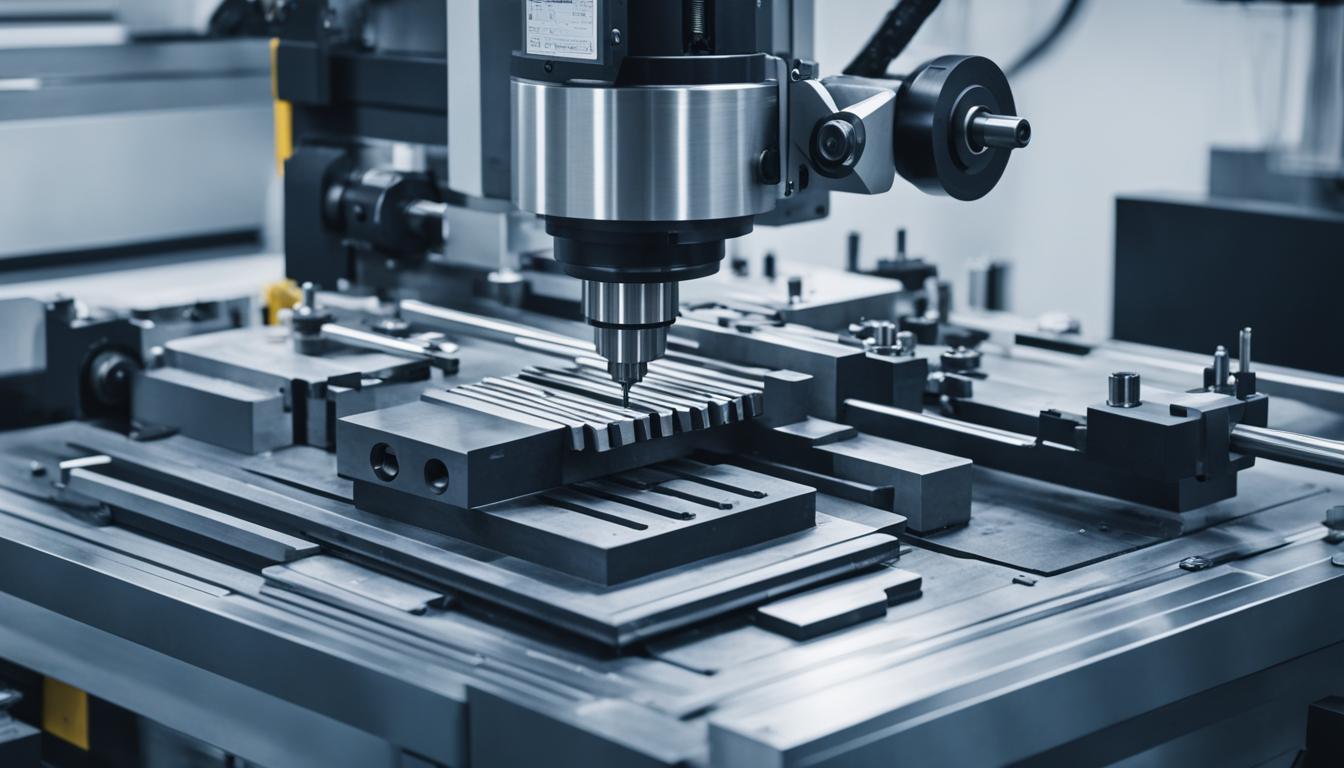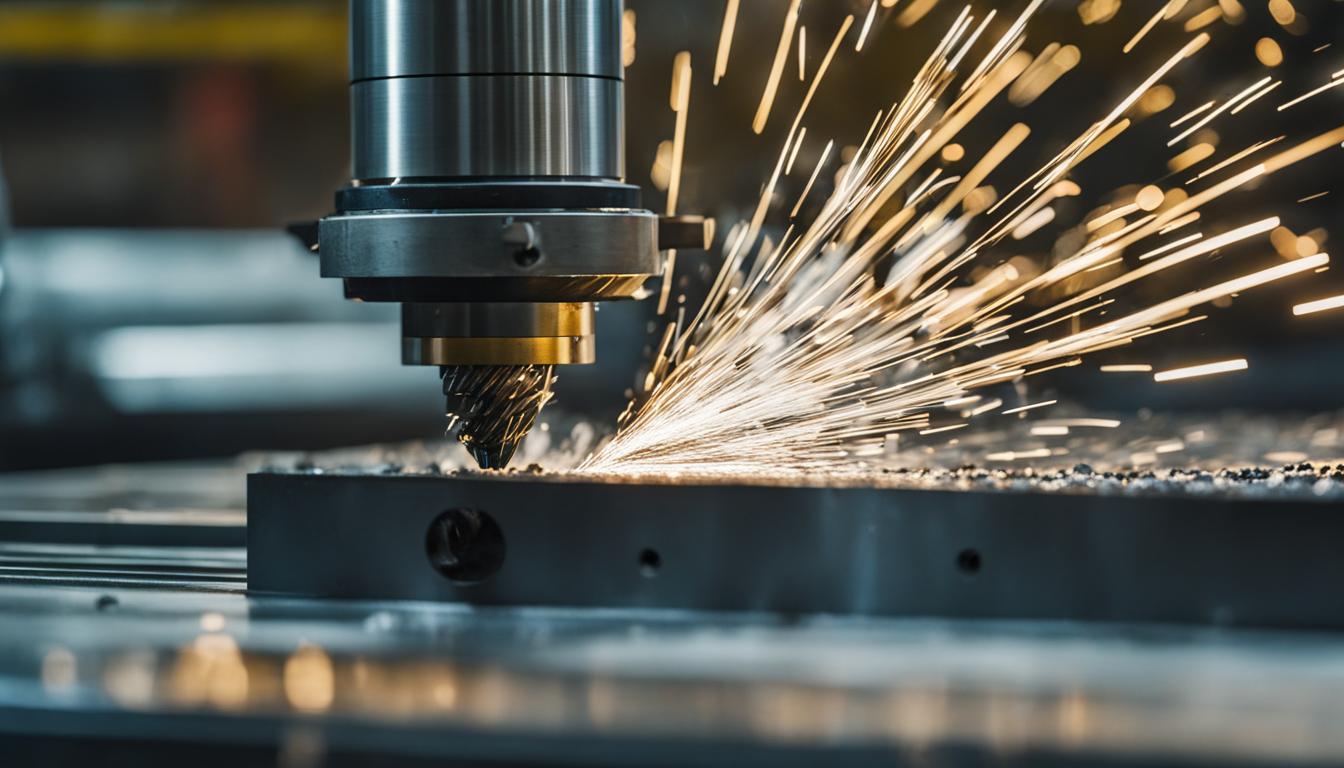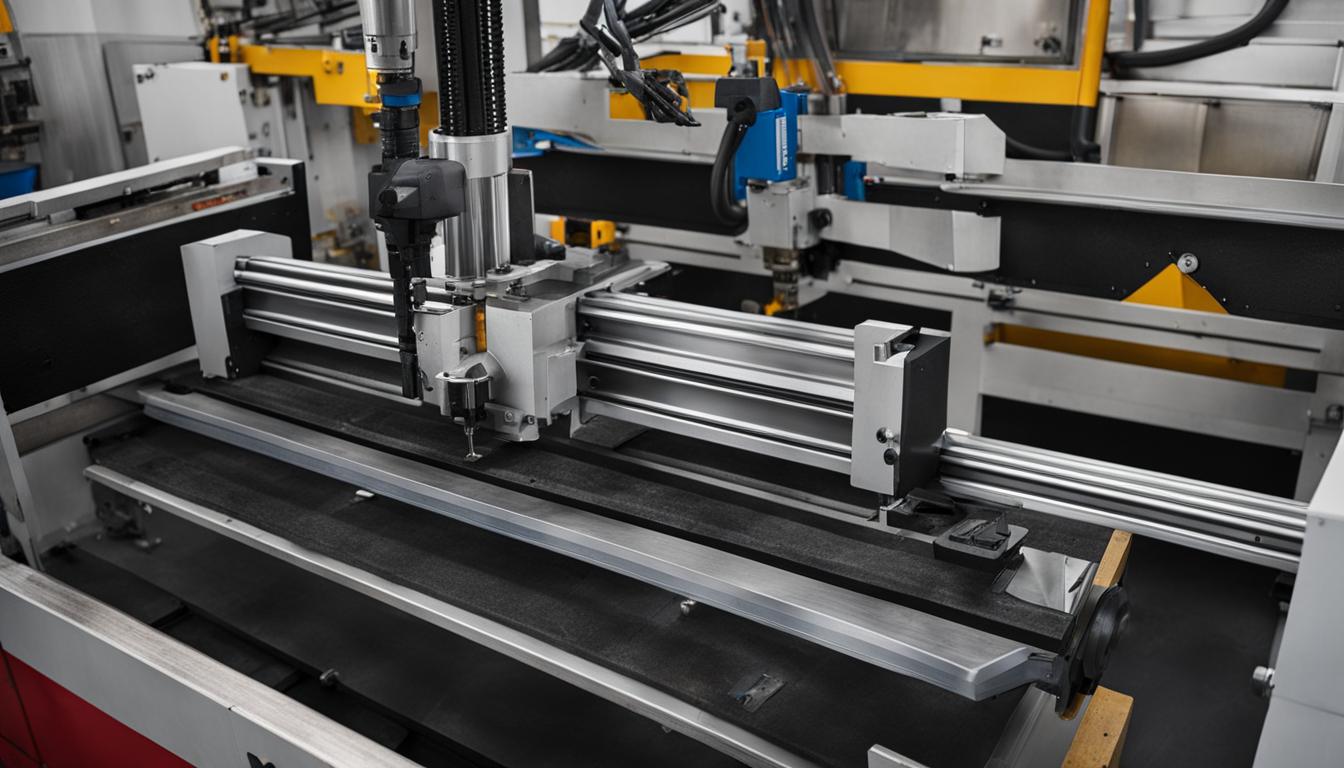Manual CNC machines combine the precision of computer numerical control with hands-on operation, offering a unique blend of traditional and modern machining techniques. These machines typically feature a digital readout (DRO) system that displays the exact position of the cutting tool, allowing operators to achieve high accuracy while maintaining manual control over the machining process. Unlike fully automated CNC systems, manual CNC machines require operators to physically move the cutting tool or workpiece using handwheels or joysticks, while the computer provides real-time position feedback and assists with complex calculations.
This setup enables machinists to leverage their experience and intuition while benefiting from digital precision, making manual CNC machines particularly useful for prototype development, small batch production, and educational purposes. Common types of manual CNC machines include mills and lathes, which can perform a wide range of cutting, drilling, and shaping operations on various materials. The integration of CNC technology into manual machines also allows for easier upgrades to full automation in the future, providing a cost-effective stepping stone for shops transitioning to more advanced manufacturing capabilities.
- A manual CNC machine is a precision tool used in manufacturing to shape workpieces with high accuracy.
- It operates under the control of a computer, allowing for complex instructions and various machining operations.
- Manual CNC machines offer increased productivity and precision compared to traditional manual machining methods.
- They are widely used in industries such as automotive, aerospace, and medical fields.
- Manual CNC machines provide improved efficiency, cost-effectiveness, and quality in manufacturing processes.
Advantages of Manual CNC Machines
Manual CNC machines offer numerous advantages compared to traditional manual machining methods. These machines are equipped with computer-controlled systems that enhance productivity, accuracy, and efficiency in manufacturing processes. Here are some key advantages of using manual CNC machines:
- Increased Productivity: Manual CNC machines can perform tasks more quickly and efficiently than manual methods, resulting in higher productivity levels.
- Higher Accuracy and Precision: Manual CNC machines utilize advanced technology to achieve precise and accurate machining, ensuring better quality parts.
- Versatility: Manual CNC machines are capable of handling a wide range of materials and shapes, allowing for greater flexibility in manufacturing various components.
- Reduced Manual Labor: These machines significantly reduce the need for manual labor, as most operations are automated. This saves time, energy, and labor costs.
- Minimized Risk of Human Error: Manual CNC machines rely on computer control, minimizing the risk of errors caused by human intervention.
Overall, manual CNC machines offer improved efficiency, cost-effectiveness, and quality in manufacturing processes, making them an invaluable asset in various industries.
| Advantages of Manual CNC Machines |
|---|
| Increased Productivity |
| Higher Accuracy and Precision |
| Versatility |
| Reduced Manual Labor |
| Minimized Risk of Human Error |
Understanding the Basics of Manual CNC Machines
To understand manual CNC machines, it is important to know the basics of their operation. A manual CNC machine consists of various components that work together to execute machining operations with precision.
The key components of a manual CNC machine include:
- Machine Frame Bed: The base structure that provides stability and support for the entire machine.
- Main Drive System: The system responsible for generating the necessary power to drive the machine’s cutting tools.
- Feed Drive System: The system that controls the movement and positioning of the workpiece in different directions.
- Workbench: The surface where the workpiece is placed and secured during machining.
- Auxiliary Motion Devices: Additional components such as rotary tables or indexers that enable more complex machining operations.
Manual CNC machines also incorporate several systems and devices to enhance their functionality:
- Hydraulic and Pneumatic Systems: Used to power specific machine functions or control certain operations.
- Lubrication Systems: Ensure smooth movement of machine components and prevent excessive wear.
- Cooling Devices: Maintain optimal temperature during machining processes.
- Chip Removal: Mechanisms to remove chips and debris generated during the machining process.
- Protection Systems: Safeguard the operator and the machine from potential hazards.
The core of a manual CNC machine is the machine control unit (MCU), an onboard computer that executes programmed instructions and controls the movement of the machine. The MCU communicates with external devices and sensors to ensure precise execution of machining operations.
The programming of a manual CNC machine is done using G-code, a standardized language that specifies the exact movements, tooling, and parameters required for a specific machining task. G-code is generated using computer-aided manufacturing (CAM) software, which allows for efficient and accurate programming based on 3D CAD models or manual input.

In the image above, you can see a visual representation of a manual CNC machine, illustrating its components and their interconnections.
Functions and Features of Manual CNC Machines
Manual CNC machines possess a range of functions and features that enable them to adapt to diverse machining tasks, showcasing their versatility and capability. These machines excel at performing various operations, including milling, turning, drilling, grinding, and cutting. With their exceptional precision, they can produce intricate designs and complex geometries with utmost accuracy.
One of the standout characteristics of manual CNC machines is their multi-axis movement capability. This allows for enhanced flexibility and improved accuracy during machining processes. The advanced tooling capabilities of these machines further contribute to their exceptional performance, making them ideal for working with a wide range of materials, including metals, plastics, and wood.
Let’s dive deeper into the exciting functions and features of manual CNC machines:
1. Versatility in Machining Operations:
Manual CNC machines are not limited to a single machining operation. They can handle multiple tasks such as milling, turning, drilling, grinding, and cutting. This versatility makes them indispensable tools in various industries, accommodating a wide range of manufacturing needs.
2. Precision and Accuracy:
One of the key advantages of manual CNC machines is their ability to deliver consistent precision and accuracy. These machines can execute complex instructions with utmost precision, ensuring that the manufactured parts meet stringent quality standards. The advanced control systems and precise movements result in high-quality finished products.
3. Multi-Axis Movement:
Manual CNC machines offer multi-axis movement, meaning they can move in multiple directions simultaneously. This capability allows for intricate and complex machining operations that require precise control over the tool’s movement. Whether it’s 3-axis or 5-axis movement, manual CNC machines offer flexibility and accuracy.
4. Advanced Tooling Capabilities:
Manual CNC machines are equipped with advanced tooling capabilities that enhance their performance. They can accommodate a wide range of cutting tools, allowing for various machining techniques and operations. These machines can employ different toolholders, cutters, and drills to optimize the machining process, resulting in higher productivity and efficiency.
Now that we have explored the functions and features of manual CNC machines, we can better understand their capabilities and why they are integral to modern manufacturing processes. The next section will delve into the different types of manual CNC machines and their specific applications.

Types of Manual CNC Machines
Manual CNC machines come in various types, each designed for specific applications and materials. Understanding the different types can help in selecting the most suitable machine for your manufacturing needs. Here are some common types of manual CNC machines:
CNC Milling Machines
CNC milling machines use cutting tools to remove material and shape workpieces. They are ideal for creating complex shapes, slots, and holes with high precision.
CNC Lathe Machines
CNC lathe machines spin the workpiece while a cutting tool shapes it. They are commonly used for turning operations such as creating cylindrical shapes or threads.
CNC Drilling Machines
CNC drilling machines are designed to create holes in materials with exceptional precision. They are widely used in industries that require accurate hole placement, such as aerospace and automotive.
CNC Grinding Machines
CNC grinding machines utilize rotating wheels to grind metal and achieve precise finishes. They are commonly used for manufacturing high-quality components with tight tolerances.
CNC Plasma Cutting Machines
CNC plasma cutting machines cut through electrically conductive materials using a plasma torch. They are capable of precisely cutting intricate shapes and profiles.
CNC Laser Cutting Machines
CNC laser cutting machines use lasers to cut through various materials with exceptional accuracy. They find applications in industries such as signage, metal fabrication, and automotive.
CNC Waterjet Cutting Machines
CNC waterjet cutting machines utilize high-pressure water jets to cut sensitive materials such as glass, stone, and ceramics. They provide precise cutting capabilities without causing heat-related damage.
CNC Electrical Discharge Machines (EDM)
CNC electrical discharge machines shape materials using sparks generated between an electrode and the workpiece. They are commonly used for machining complex shapes and hard materials.
CNC Router Machines
CNC router machines use computer numerical control to shape materials such as wood and plastic. They find applications in industries such as woodworking, signage, and prototyping.
Comparison Table: Types of Manual CNC Machines
| Type | Application | Precision | Materials |
|---|---|---|---|
| CNC Milling Machines | Complex shaping, slotting, hole creation | High precision | Metal, plastic, wood |
| CNC Lathe Machines | Turning, cylindrical shaping | High precision | Metal, plastic |
| CNC Drilling Machines | Precision hole creation | Exceptional precision | Metal, plastic |
| CNC Grinding Machines | Precision grinding, surface finishing | High precision | Metal |
| CNC Plasma Cutting Machines | Intricate shape cutting | Precise cutting | Metal |
| CNC Laser Cutting Machines | Accurate cutting of various materials | Exceptional accuracy | Metal, plastic, wood |
| CNC Waterjet Cutting Machines | Precision cutting of sensitive materials | High precision | Glass, stone, ceramics |
| CNC Electrical Discharge Machines | Machining complex shapes, hard materials | High precision | Metal |
| CNC Router Machines | Shaping of wood, plastic | High precision | Wood, plastic |
Applications of Manual CNC Machines
Manual CNC machines have a wide range of applications, making them indispensable tools in various industries such as automotive, aerospace, medical, and manufacturing. These machines are highly valued for their ability to manufacture components and parts with exceptional precision and accuracy.
CNC machines excel at producing complex shapes, intricate holes, precise grooves, and other features in a wide variety of materials. Their versatility allows for the creation of gears, engine parts, molds, dies, prototypes, and many other components crucial to modern industries.
In the automotive industry, manual CNC machines are used to fabricate engine components, transmission parts, and chassis components. These machines ensure the highest level of precision, resulting in improved performance and reliability of vehicles.
Similarly, in the aerospace industry, CNC machines are used to manufacture critical aircraft parts, such as turbine blades, wing components, and landing gear components. The exceptional accuracy provided by manual CNC machines contributes to the safety and efficiency of aircraft.
In the medical field, CNC machines play a vital role in the production of orthopedic implants, surgical instruments, and medical devices. These machines allow for the creation of complex and customized designs that perfectly fit the unique needs of patients, ensuring successful medical procedures.
For manufacturers, manual CNC machines offer unparalleled efficiency and cost-effectiveness. They enable the creation of high-quality parts in large quantities, reducing production costs and increasing productivity. CNC machines are capable of running continuously, minimizing downtime and maximizing output.
Sample Applications of Manual CNC Machines
Here are some specific examples of applications where manual CNC machines are widely used:
- Manufacturing gears for automotive and industrial applications.
- Producing engine components, such as pistons, crankshafts, and cylinder heads.
- Fabricating molds and dies for plastic injection molding and metal casting.
- Creating surgical instruments with intricate designs and high precision.
- Manufacturing complex prototypes for product development and testing.
- Producing parts with intricate patterns and designs for artistic and decorative purposes.
With their versatility, precision, and efficiency, manual CNC machines continue to revolutionize the manufacturing industry, driving innovation and enabling the production of high-quality components and parts.
| Industry | Applications |
|---|---|
| Automotive | Engine components, transmission parts, chassis components, gears |
| Aerospace | Turbine blades, wing components, landing gear components |
| Medical | Orthopedic implants, surgical instruments, medical devices |
| Manufacturing | Gears, molds and dies, prototypes, artistic and decorative parts |
The Evolution of Manual CNC Machines
Manual CNC machines have a fascinating history that traces back to the early development of automation in machining processes. Initially, automation relied on mechanical linkages and cam-based systems to control machine movements. However, with advancements in technology, servo mechanisms and numerical control (NC) systems were introduced, revolutionizing the precision and control of machining operations.
The breakthrough moment came with the development of computer numerical control (CNC) machines, which have become the industry standard today. The integration of computers and software into machining processes allowed for greater accuracy, efficiency, and versatility in the production of parts and components.
Over the years, manual CNC machines have undergone significant evolution, resulting in more compact, powerful, and capable systems. Advanced features and improved efficiency have made these machines indispensable in various industries. Their ability to execute complex instructions with utmost precision has transformed modern manufacturing processes.
Today, manual CNC machines offer enhanced automation, real-time data monitoring, and predictive maintenance, thanks to the integration of technologies like artificial intelligence, machine learning, and internet connectivity. These advancements promise an exciting future for manual CNC machines, with further improvements in productivity, precision, and user-friendliness.
The Future of Manual CNC Machines
The future of manual CNC machines is filled with exciting advancements and innovations in the field of precision machining. As technology continues to evolve, manual CNC machines are being equipped with cutting-edge technologies such as artificial intelligence (AI), machine learning, and internet connectivity, paving the way for a new era of automation and efficiency.
With the integration of AI and machine learning, manual CNC machines are becoming smarter and more intuitive. They can learn from previous machining processes, optimize tool paths, and constantly improve their performance. This not only enhances productivity but also ensures the production of high-quality and accurate parts.
Furthermore, the incorporation of internet connectivity enables real-time data monitoring and analysis. Manufacturers can remotely monitor the status of their manual CNC machines, track production progress, and identify potential issues before they become major problems. By leveraging the power of predictive maintenance, downtime can be minimized, and machine performance can be maximized.
As advancements in manual CNC machines continue, the future holds the promise of increased accessibility and user-friendliness. User interfaces are becoming more intuitive and easy to navigate, allowing operators to quickly adapt to the machines and maximize their efficiency. With these advancements, manual CNC machines will remain a vital tool in shaping the future of manufacturing, providing precision, reliability, and versatility to meet the ever-changing demands of various industries.
